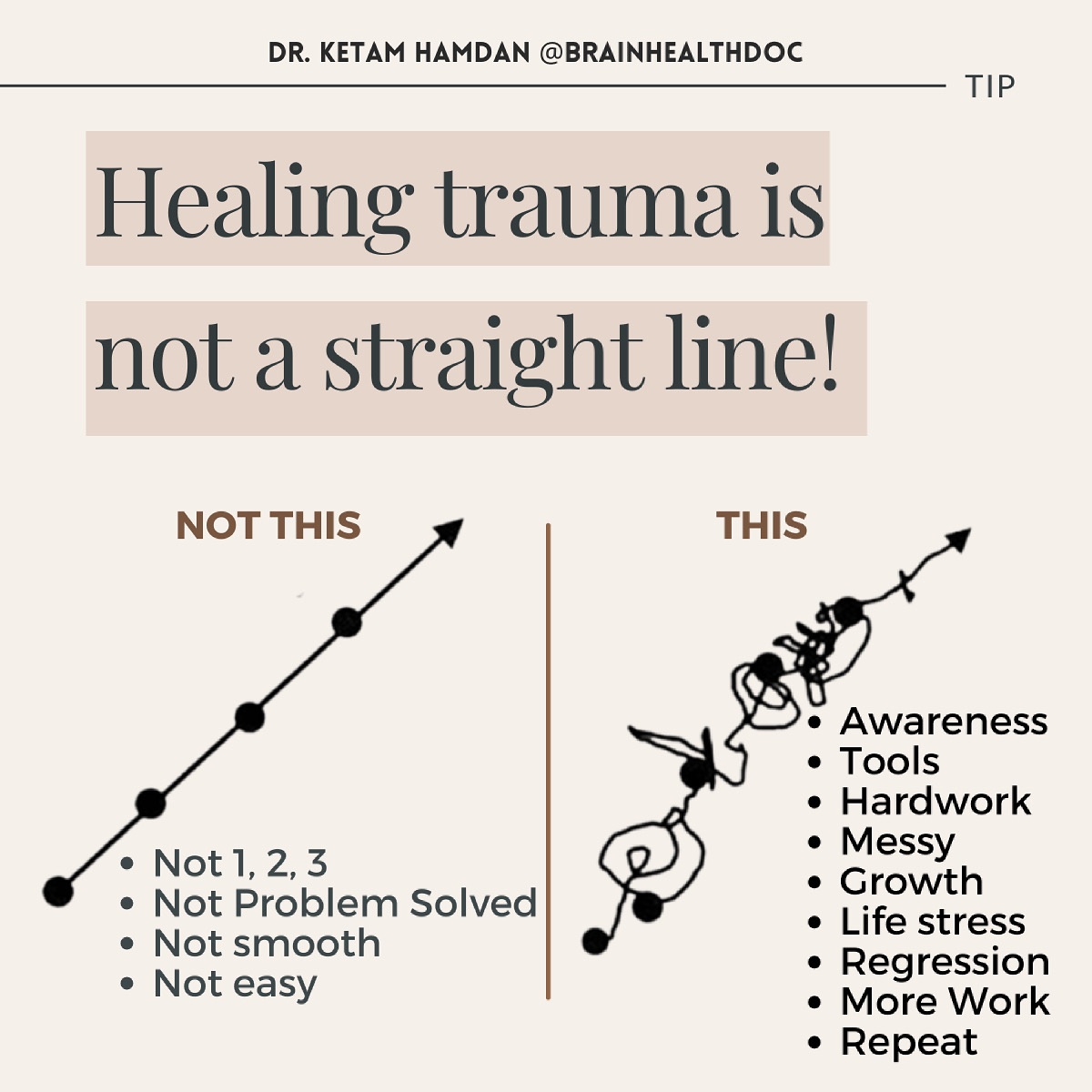What does the healing process look like?

Healing from psychological and emotional trauma is not a simple and easy process. The process is unique for each person, but regardless the path is not linear or 1, 2,3 problem solved. This post shows the chaotic process of healing, especially for emotional trauma.
Things to note:
- Trauma is not a singular event that can be overcome in a short duration or through one or two sessions of therapy
- Trauma impacts one’s life in many ways, such as intimate relationships become challenging and one often loses a sense of self that makes things such as self-care difficult
- Trauma impacts the body and brain, which changes how we view the world around us
- One may have many layers of trauma, thus as one heals one layer and feels like things getter better, it is not uncommon to regress and start feeling worse.
- On the journey, expect life stressors to happen and trigger old patterns or unhealthy behavior (such as anger, aggressive behavior, closing off or withdrawing from others, etc.). This should not discourage you from continuing the healing journey or from doing the inner work. These set backs are essential in understanding what needs to be healed still.
The key is to recognize that healing requires self-awareness and a commitment to growth. At times, things will be challenging and you will feel discouraged. One benefits from focusing on small incremental changes that lead to sustainable results over time. A good therapist will help you understand this messy cycle more. In my next post, I will highlight the different types of treatments used to heal trauma such as somatic, cognitive, dialectical, etc. and what can be most effective.
If you or someone you know is struggling with trauma or drama, do not hesitate to reach out to a professional. This blog is meant to be informative, but is not a substitute for professional therapy.
With love,
Ketam


